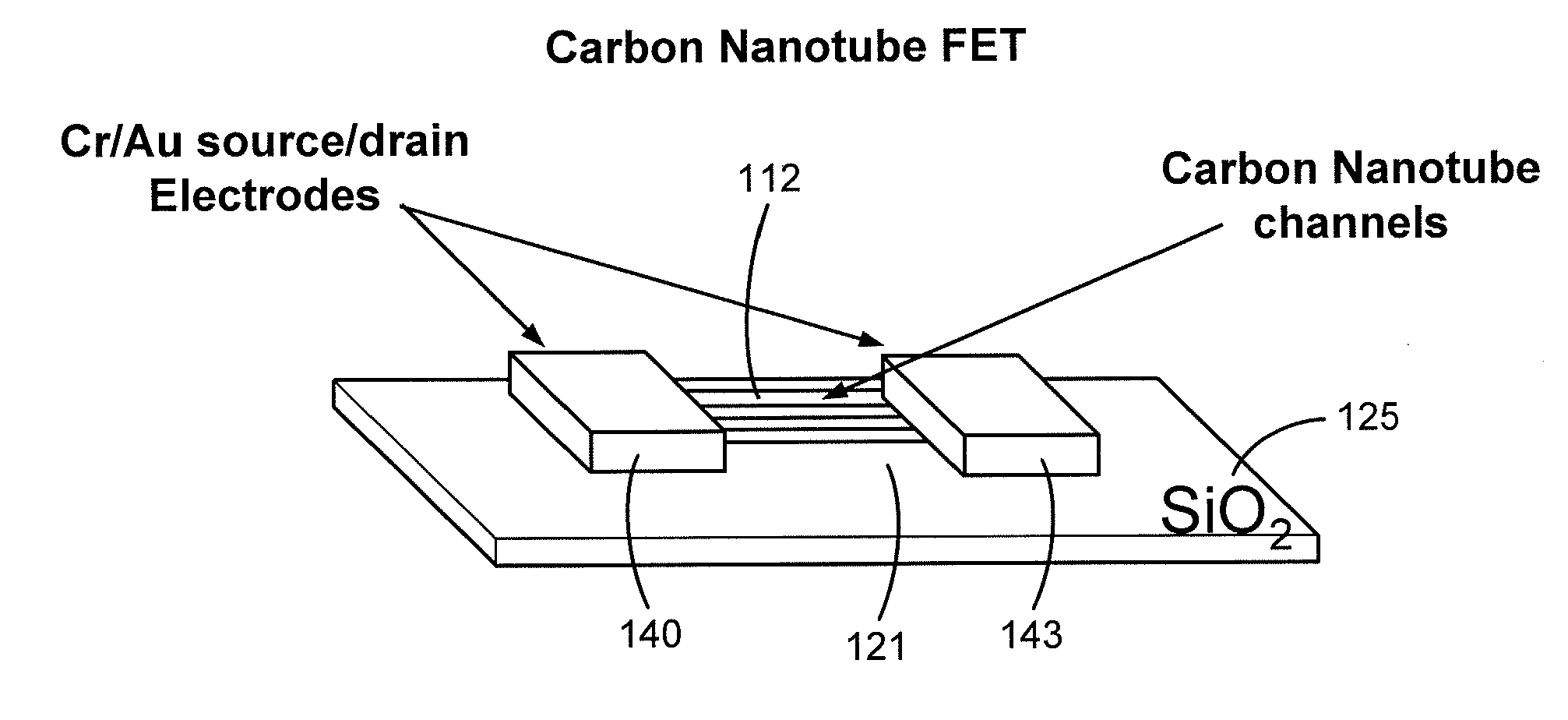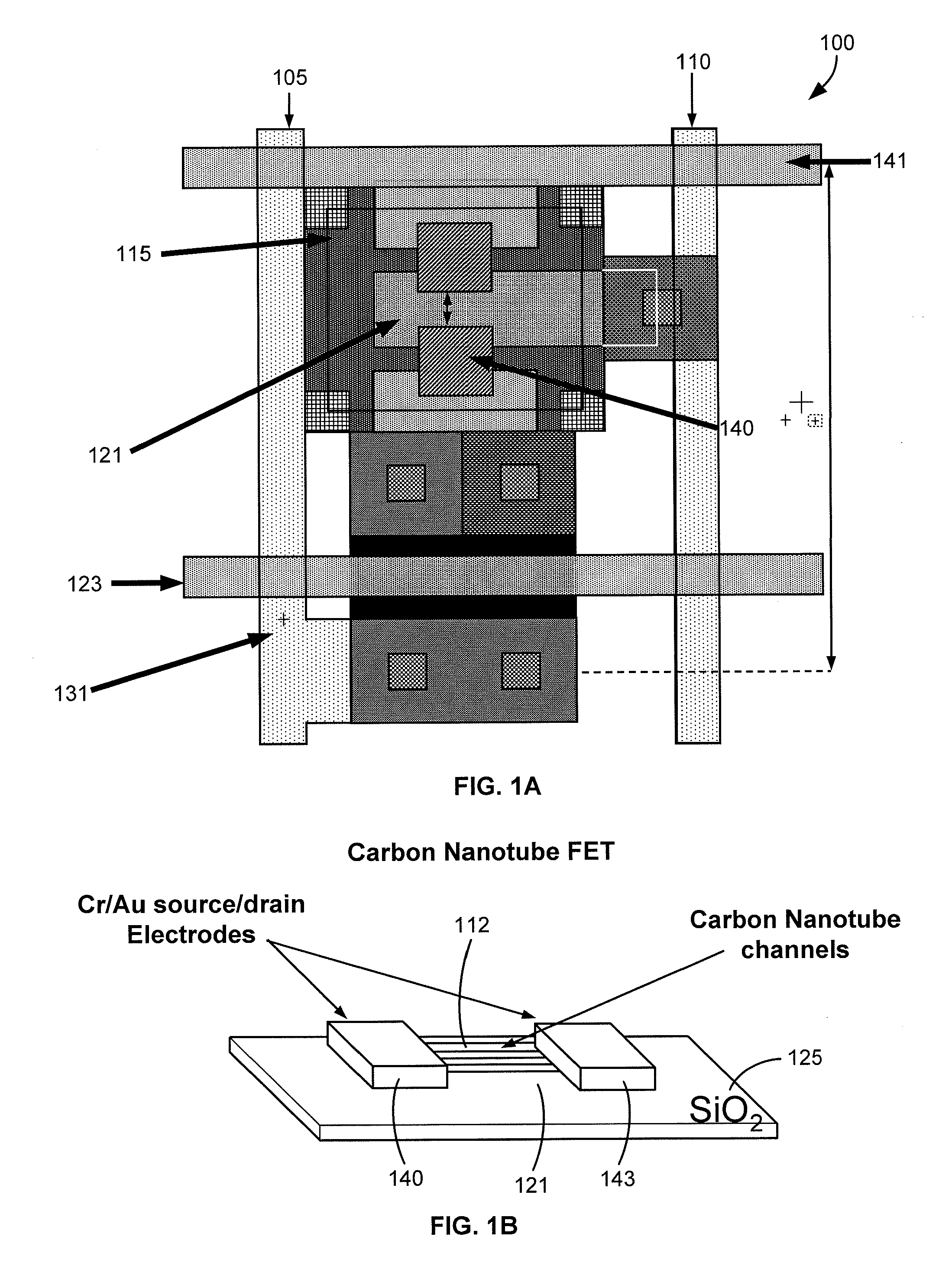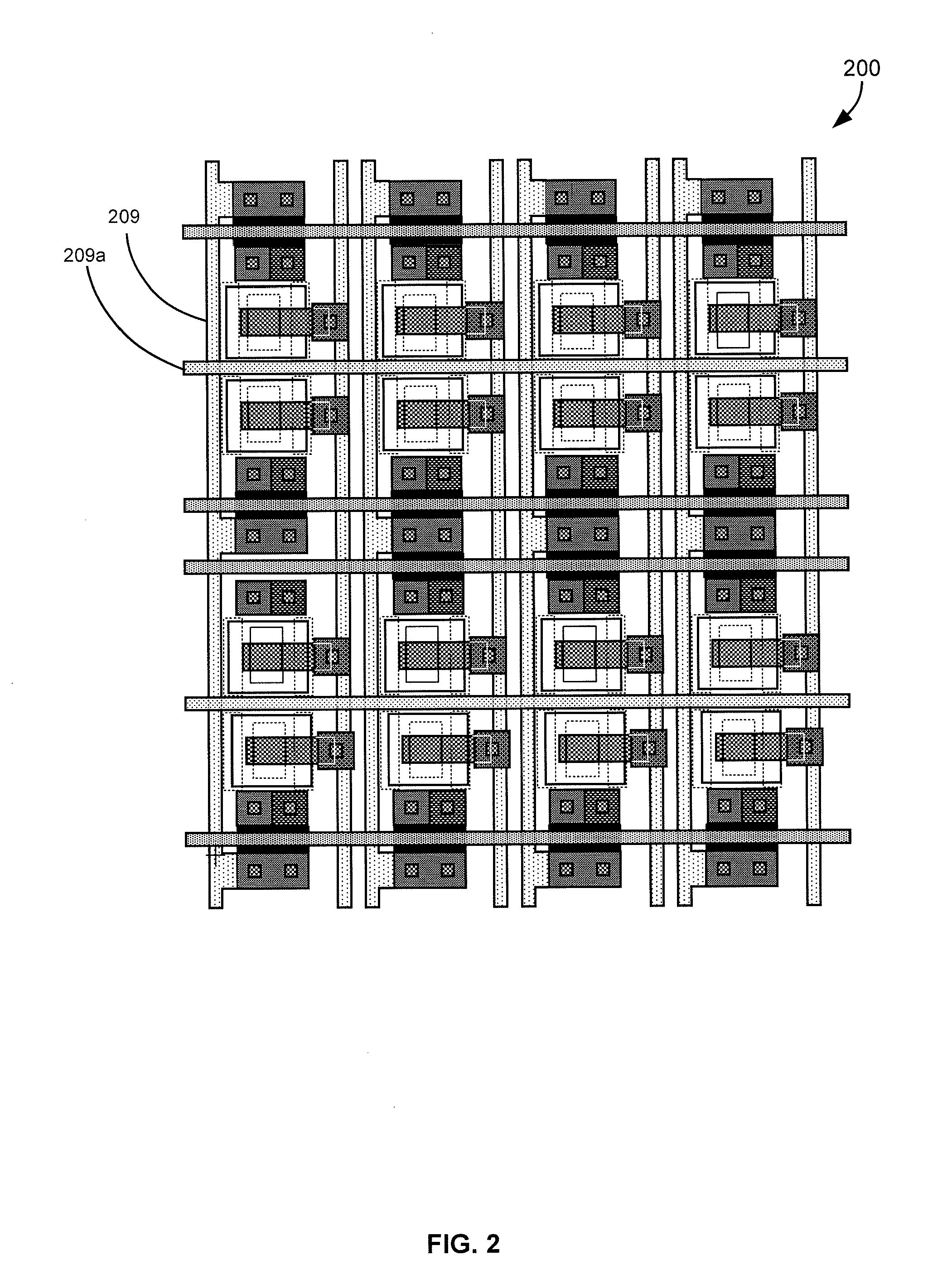Hybrid sensor array
a sensor array and hybrid technology, applied in the field of hybrid sensor arrays, can solve the problems of not being able to demonstrate convincingly that the useful detection of specific analytes can be accomplished in this way, and no artificial system developed with such high dimensionality, and achieve the effects of high dimensionality, high dimensionality, and low cost of electronic chips
- Summary
- Abstract
- Description
- Claims
- Application Information
AI Technical Summary
Benefits of technology
Problems solved by technology
Method used
Image
Examples
examples
[0071]Example 1 illustrates certain electronic characteristics of one nanotube mat FET on a nanotube FET sensor chip.
[0072]A hybrid sensor array was constructed containing 16 nanotube FETs along with a companion TFT in a 96-well sensor module and the attendant electronics to control gate voltage wherein each transistor is individually controllable and the source / drain voltage (common across the chip) and to read the current from each of the 1,536 sensor transistors. The 16 transistors in each well is identically functionalized, allowing the S / N benefit of averaging, while the 96 wells on each chip affords high dimensionality in this artificial “olfactory epithelium”. A single breadboard airpath contains 3 such chips in series, along with the attendant control electronics.
[0073]In FIG. 8, the data show the source / drain current (▪) across the range of gating voltages immediately after fabrication. The high current level and low on-to-off current ratio is indicative of a high metallic ...
PUM
| Property | Measurement | Unit |
|---|---|---|
| length | aaaaa | aaaaa |
| diameter | aaaaa | aaaaa |
| diameter | aaaaa | aaaaa |
Abstract
Description
Claims
Application Information
 Login to View More
Login to View More - R&D
- Intellectual Property
- Life Sciences
- Materials
- Tech Scout
- Unparalleled Data Quality
- Higher Quality Content
- 60% Fewer Hallucinations
Browse by: Latest US Patents, China's latest patents, Technical Efficacy Thesaurus, Application Domain, Technology Topic, Popular Technical Reports.
© 2025 PatSnap. All rights reserved.Legal|Privacy policy|Modern Slavery Act Transparency Statement|Sitemap|About US| Contact US: help@patsnap.com



